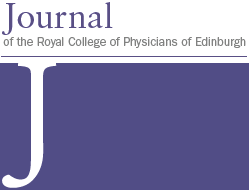A 32-year-old male presented with a throbbing holocranial headache of 3 months’ duration. The headache was worse on lying down, disturbed his sleep and was associated with blurred vision. He was treated for sinusitis and migraine by primary care physicians during this period. Although plethoric and cyanosed, he was haemodynamically stable with an oxygen saturation of 85% on ambient air. Review of his medical records confirmed that he had a perimembranous ventricular septal defect of 26mm with pulmonary hypertension (pressure gradient of 60mm Hg) with reversal of cardiac shunt. His haemoglobin was 24.1g/dl with a packed cell volume (PCV) of 70%. The best corrected vision of both eyes was 6/24 with bilateral papilloedema, dilated retinal veins and scattered retinal haemorrhages (Figure 1). Phlebotomy at regular intervals resulted in resolution of the headache and the distinct changes in the optic fundus (Figure 2). Corrected vision of both eyes improved to 6/9.

Figure 1 Optic fundus – before treatment

Figure 2 Optic fundus – after treatment
Headache is one of the most common symptoms encountered in primary care.1 Although it is an important presenting symptom, studies reveal that there are significant knowledge deficits among primary care physicians regarding the diagnosis and management of common headache syndromes.2,3 Most general practice guidelines for the evaluation of headache recommend exclusion of a secondary cause as the initial step.4 According to the Guideline for Primary Care Management of Headache in Adults,4 any headache which is continuous from the onset is denoted by the term ‘new daily persistent headache’ and should be referred to a specialist.4 The patient described here also had a persistent headache of 3 months’ duration which was overlooked at the primary care stage.
Headache is a recognised symptom of polycythaemia. Polycythaemia could be primary or secondary as described here. Even though the exact pathophysiological mechanisms are not readily evident, an increase in blood viscosity induces disturbed microcirculation which is said to be the primary cause of headaches with other clinical symptoms.5 Thrombocytosis and leukocytosis could also result in headache due to a similar mechanism.6 Increased blood viscosity could be identified to a certain extent by a clinician examining the optic fundus for classical features as retinal vasculature often reflects the microvascular changes due to the altered blood viscosity. In addition, examining the optic fundi could reveal other potentially relevant clinical information to exclude the most common secondary causes of headache, namely glaucoma, hypertension and increased intracranial pressure. Each one of these conditions would show the classical or pathognomonic changes in the optic fundi.
A complete blood count and erythrocyte sedimentation rate (ESR) are two essential first-line blood investigations that could exclude an array of secondary causes of headache. The value of these two simple blood tests is remarkable in evaluating headache in the elderly as it could almost exclude the myeloproliferative disorders and temporal arteritis, the two important potentially treatable causes of secondary headache in older people.
In conclusion, it is worth re-emphasising the fact that examining the optic fundus and performing readily available and simple blood investigations like a complete blood count and ESR could complement each other in excluding the most common secondary causes of headache. It is a cost-effective and time-saving exercise in the initial step of evaluating headache at primary care level.
References
1 Latinovic R, Gulliford M, Ridsdale L. Headache and migraine in primary care: consultation, prescription, and referral rates in a large population. J Neurol Neurosurg Psychiatry 2006; 77: 385–7.
2 De Diego EV, Lanteri-Minet M. Recognition and management of migraine in primary care: influence of functional impact measured by the headache impact test (HIT). Cephalalgia 2005; 25: 184–90.
3 Khu JV, Siow HC, Ho KH. Headache diagnosis, management and morbidity in the Singapore primary care setting: findings from a general practice survey. Singapore Med J 2008; 49: 774–9.
4 Becker WJ, Findlay T, Moga C et al. Guideline for primary care management of headache in adults. Can Fam Physician 2015; 61: 670–9.
5 Ickenstein GW, Klotz JM, Langohr HD. [Headache caused by polycythemia vera. Classification of a headache under the heading of metabolic disturbances] Schmerz 1999; 13: 279–82.
6 Frewin R, Dowson A. Headache in essential thrombocythaemia. Int J Clin Pract 2012; 66: 976–83.
